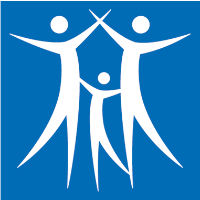预约演示
更新于:2025-05-07

PeproMene Bio, Inc.
更新于:2025-05-07
概览
标签
肿瘤
免疫系统疾病
血液及淋巴系统疾病
生物药
CAR-NK
双特异性T细胞结合器
疾病领域得分
一眼洞穿机构专注的疾病领域
暂无数据
技术平台
公司药物应用最多的技术
暂无数据
靶点
公司最常开发的靶点
暂无数据
| 排名前五的药物类型 | 数量 |
|---|---|
| 生物药 | 2 |
| 自体CAR-T | 1 |
| 双特异性T细胞结合器 | 1 |
| CAR-NK | 1 |
| 排名前五的靶点 | 数量 |
|---|---|
| BAFF-R(B细胞活化因子受体) | 2 |
| BAFF-R x CD3 | 1 |
关联
5
项与 PeproMene Bio, Inc. 相关的药物靶点 |
作用机制 BAFF-R抑制剂 [+3] |
非在研适应症- |
最高研发阶段临床1期 |
首次获批国家/地区- |
首次获批日期- |
靶点 |
作用机制 BAFF-R调节剂 |
在研适应症 |
非在研适应症- |
最高研发阶段临床前 |
首次获批国家/地区- |
首次获批日期- |
靶点- |
作用机制- |
在研适应症 |
非在研适应症- |
最高研发阶段临床前 |
首次获批国家/地区- |
首次获批日期- |
2
项与 PeproMene Bio, Inc. 相关的临床试验NCT05370430
A Phase 1 Study Evaluating BAFFR-targeting CAR T Cells for Patients with Relapsed or Refractory B-cell Non-Hodgkin's Lymphoma (B-NHL)
A Phase 1 Study Evaluating BAFFR-targeting CAR T Cells for Patients with Relapsed or Refractory B-cell Non-Hodgkin's Lymphoma (B-NHL)
开始日期2022-06-13 |
申办/合作机构  PeproMene Bio, Inc. PeproMene Bio, Inc. [+1] |
NCT04690595
A Phase 1 Study Evaluating BAFFR-targeting CAR T Cells for Patients With Relapsed or Refractory B-cell Acute Lymphoblastic Leukemia
A Phase 1 Study Evaluating BAFFR-targeting CAR T Cells for Patients with Relapsed or Refractory B-cell Acute Lymphoblastic Leukemia
开始日期2021-05-18 |
申办/合作机构  PeproMene Bio, Inc. PeproMene Bio, Inc. [+1] |
100 项与 PeproMene Bio, Inc. 相关的临床结果
登录后查看更多信息
0 项与 PeproMene Bio, Inc. 相关的专利(医药)
登录后查看更多信息
3
项与 PeproMene Bio, Inc. 相关的文献(医药)2024-11-05·Blood
Favorable Safety Profile and Durable Responses to Pmb-CT01 (BAFFR-CAR T Cell) Therapy in Patients with B-Cell Lymphomas Ineligible for or Who Failed CD19-Targeted Therapy, Including CD19-Negative Disease
作者: Kambhampati, Swetha ; Cheng, Hazel Ting-Ying ; Marcucci, Emanuela C ; Kwak, Larry W. ; Liu-Michael, Qing ; Wang, Xiuli ; Cha, Soungchul ; Del Real, Marissa Morales ; Baird, John H. ; Forman, Stephen J. ; Budde, Lihua E. ; Chen, Lu ; Barva, Baishakhi ; Kim, Teresa ; Macias, Alan ; Song, Joo Y. ; Puverel, Sandrine ; Dong, Zhenyuan
2024-06-01·Journal of Clinical Oncology
PMB-CT01 (BAFFR-CAR T cell) therapy to examine preliminary safety and clinical responses in patients with B-cell malignancies who are ineligible for or failed CD19-directed therapy, including CD19-negative disease.
作者: Espinosa, Ruby ; Baird, John H. ; Wang, Xiuli ; Cheng, Hazel (Ting-Ying) ; Barva, Baishakhi ; Puverel, Sandrine ; Kim, Teresa ; Guan, Min ; Aldoss, Ibrahim ; Del Real, Marissa ; Macias, Alan ; Chen, Lu ; Kwak, Larry W. ; Kambhampati, Swetha ; Dulan, Sylvia ; Forman, Stephen J. ; Tiemann, Katrin ; Budde, Lihua Elizabeth ; Song, Joo Y
2023-11-02·Blood
Promising Safety and Anti-Lymphoma Efficacy of Autologous Pmb-CT01 (BAFFRCAR T Cell) Therapy in a First-in-Human Phase 1 Study
作者: Barva, Baishakhi ; Baird, John H. ; Chen, Lu ; Macias, Alan ; Tiemann, Katrin ; Kwak, Larry W. ; Puverel, Sandrine ; Del Real, Marissa Morales ; Song, Joo Y. ; Cheng, Hazel Ting-Ying ; Budde, L. Elizabeth ; Forman, Stephen J. ; Kambhampati, Swetha ; Dulan, Sylvia ; Kim, Teresa
24
项与 PeproMene Bio, Inc. 相关的新闻(医药)2025-01-04
·药明康德
▎药明康德内容团队编辑
近期,全球细胞和基因疗法(CGT)领域迎来系列进展。FDA批准了首款间充质基质细胞(MSC)疗法Ryoncil。诺华(Novartis)用于治疗脊髓性肌萎缩症(SMA)的一次性基因疗法达3期临床试验终点,是首个在年龄≥2岁、未经治疗的SMA患者中显示出临床益处的在研基因疗法。能够特异性靶向6种不同肿瘤抗原的T细胞疗法MT-601用于治疗淋巴瘤患者,在一项1期研究中的客观缓解率(ORR)达78%。本文将节选其中部分重要进展做简单介绍,仅供读者参阅。
图片来源:123RF
———✦研发进展✦———
◇ 美国FDA宣布批准Mesoblast公司开发的Ryoncil(remestemcel)上市,用于治疗≥2个月的儿童患者的类固醇难治性急性移植物抗宿主病(SR-aGVHD)。Ryoncil是一种通过同种异体骨髓生成的间充质基质细胞,它通过抑制T细胞增殖,和下调促炎细胞因子和干扰素的产生,来调节T细胞介导的炎症反应。Ryoncil疗效的主要依据是治疗开始后28天的缓解率和缓解持续时间。结果显示,16名受试者(30%)在接受Ryoncil治疗28天后达到完全缓解,而22名受试者(41%)达到部分缓解。FDA的新闻稿指出,Ryoncil是首个FDA批准的间充质基质细胞疗法。
◇ 诺华公布了其鞘内注射的一次性基因疗法onasemnogene abeparvovec在3期STEER研究中获得的积极初步结果。这项关键性研究的研究对象是2岁至18岁以下、能够坐立但从未独立行走的2型脊髓性肌萎缩症患者。结果显示,研究达到了主要终点,接受治疗的SMA患者的汉默史密斯功能运动量表(HFMSE)总分较基线增加,该量表是SMA特异性评估运动能力和疾病进展的金标准。新闻稿指出,该疗法是首个在年龄≥2岁的未经治疗的SMA患者中显示出临床益处的在研基因疗法。
◇ Marker Therapeutics公司公布了其多抗原识别(MAR)T细胞产品MT-601用于治疗淋巴瘤患者的1期临床试验结果,这些患者在接受CD19靶向嵌合抗原受体(CAR)-T细胞疗法后复发,或无法接受CD19靶向CAR-T细胞治疗。截至2024年9月10日的数据,9名接受治疗的患者中有7名在首次缓解评估中达到缓解,ORR为78%,其中4名患者(44%)达到了完全缓解(CR)。安全性方面,MT-601在所有受试者中均具有良好的耐受性,未观察到免疫效应细胞相关神经毒性综合征(ICANS)。
MT-601能够特异性靶向在淋巴瘤细胞中上调的六种不同肿瘤抗原:Survivin、PRAME、WT-1、NY-ESO-1、SSX-2、MAGE-A4。这种细胞疗法通过选择性扩增患者体内的肿瘤抗原特异性T细胞生成,没有经过基因工程改造。由于靶向多种肿瘤相关抗原,肿瘤细胞不容易通过丢失单一抗原来逃避该疗法的攻击。
◇ Arbor Biotechnologies公司宣布,美国FDA批准了其用于治疗1型原发性高草酸尿症(PH1)的新型基因编辑疗法ABO-101的IND申请。ABO-101由脂质纳米颗粒(LNP)封装表达新型Type V CRISPR Cas12i2核酸酶的mRNA和经过优化的、特异性靶向人类HAO1基因的引导RNA制作而成。该疗法旨在作为一次性治疗手段,通过永久性地使肝脏中的HAO1基因失活来减少与PH1相关的草酸盐生成。即将开展的1/2期研究旨在评估ABO-101在成人和儿童PH1患者中的安全性、耐受性、药代动力学、药效学和初步疗效。
◇ 科济药业宣布,其靶向Claudin18.2的自体CAR-T细胞候选产品舒瑞基奥仑赛注射液的一项关键2期临床试验CT041-ST-01已达到主要终点。该试验是一项在中国进行的随机对照、多中心研究,旨在评估舒瑞基奥仑赛注射液用于治疗Claudin18.2表达阳性、既往接受过至少2线治疗失败的晚期胃/食管胃结合部腺癌患者的有效性和安全性。受试者以2:1的比例随机分配至舒瑞基奥仑赛注射液组或研究者选择治疗组(包括紫杉醇、多西他赛、伊立替康、阿帕替尼或纳武利尤单抗)。结果显示,与研究者选择治疗组相比,舒瑞基奥仑赛注射液组中的受试者的无进展生存期具有统计学意义上的显著改善。既往试验数据表明,该产品安全性可控。
该公司近期还宣布,其自主研发的一款靶向CD19/CD20的通用型CAR-T细胞治疗候选产品KJ-C2219已在中国启动一项针对复发/难治性B细胞非霍奇金淋巴瘤(R/R B-NHL)的研究者发起的临床试验(IIT)。
◇ 星汉德生物(SCG)宣布,中国国家药品监督管理局(NMPA)药品审评中心已批准其全新一代人乳头瘤病毒(HPV)特异性T细胞受体(TCR)工程化T细胞疗法SCG142的IND申请,用于治疗HPV感染相关的恶性肿瘤,包括宫颈癌、口咽癌、头颈癌、阴道癌、外阴癌和阴茎癌等。临床前数据表明,SCG142通过嵌合开关受体强化技术,在不依赖于CD8共受体信号的情况下,能有效双重激发CD8阳性与CD4阳性TCR-T细胞,在高度免疫抑制性的肿瘤微环境下,发挥强效的抗肿瘤活性,并促进记忆性T细胞的长期存续,确保免疫细胞疗法持久显著的治疗效果。此外,SCG142的高亲和力特性,可以同时识别HPV-16和HPV-52基因型相关宫颈癌、头颈癌等多种HPV病毒相关肿瘤,显著提升患者人群覆盖率。
———✦融资、合作、M&A✦———
图片来源:123RF
◇ 安斯泰来(Astellas Pharma)和Sangamo Therapeutics公司宣布达成一项许可协议,允许安斯泰来将Sangamo的新型专有神经趋向性腺相关病毒(AAV)衣壳STAC-BBB用于多达5个潜在神经系统疾病靶点的权利。该衣壳已在非人类灵长类动物中显示出强大的血脑屏障穿透能力和神经元转导能力。根据协议条款,Sangamo负责完成与STAC-BBB衣壳相关的技术转移。安斯泰来负责所有研究、临床前和临床开发、监管互动、制造以及由此产生的基因治疗产品的全球商业化。Sangamo将从安斯泰来获得2000万美元的预付款许可费用,并有资格获得高达13亿美元的额外靶点许可费用和里程碑付款。
◇ PeproMene Bio公司宣布获得滤泡性淋巴瘤创新研究所(Institute for Follicular Lymphoma Innovation,简称IFLI)投资的1100万美元,该资金将用于资助其靶向BAFF-R的CAR-T细胞疗法PMB-CT01在治疗复发或难治性滤泡性淋巴瘤患者方面的临床研究与开发。该投资包括600万美元的预付款和额外500万美元的条件性分批投资。研究表明,BAFF-R靶向CAR-T细胞在体外和动物模型中能够有效杀死人类淋巴瘤和白血病细胞。PeproMene Bio公司已从City of Hope获得与PMB-CT01相关的知识产权许可。
◇ 瑞风生物科技有限公司(简称“瑞风生物”)宣布获得数亿元人民币的新一轮融资,所得资金将主要用于推动其基因编辑药物的临床试验、后续研发管线扩展以及核心技术创新。本轮融资由广州产投领投,广州金控、科金控股及现有股东港粤资本等机构跟投。
目前,该公司已在α和β两类地中海贫血遗传病领域进行基因编辑药物产品管线的布局。瑞风生物针对β-地中海贫血的产品RM-001在全球范围内开展了基于新靶点基因编辑的临床研究,并取得了较好的临床疗效,全部受试者实现脱离输血。该产品的确证性临床试验有望于近期开展。其针对α-地中海贫血的创新基因编辑药物RM-004已成功治疗首位患者。针对视网膜疾病Usher综合征的创新药物RM-101于2024年相继获得中美监管部门批准开展临床试验。除以上管线外,瑞风生物还布局了中枢神经系统(CNS)和肝脏等领域的重大疾病体内基因编辑疗法,部分项目已取得阶段性进展。
▲欲了解更多前沿技术在生物医药产业中的应用,请长按扫描上方二维码,即可访问“药明直播间”,观看相关话题的直播讨论与精彩回放
参考资料(可上下滑动查看)
[1] FDA Approves First Mesenchymal Stromal Cell Therapy to Treat Steroid-refractory Acute Graft-versus-host Disease. Retrieved December 18, 2024, from https://www.fda.gov/news-events/press-announcements/fda-approves-first-mesenchymal-stromal-cell-therapy-treat-steroid-refractory-acute-graft-versus-host?utm_medium=email&utm_source=govdelivery
[2] Novartis intrathecal onasemnogene abeparvovec Phase III study meets primary endpoint in children and young adults with SMA. Retrieved December 30, 2024, from https://www.novartis.com/news/media-releases/novartis-intrathecal-onasemnogene-abeparvovec-phase-iii-study-meets-primary-endpoint-children-and-young-adults-sma
[3] Arbor Biotechnologies Announces FDA Acceptance of IND Application for ABO-101 for the Treatment of Primary Hyperoxaluria Type 1. Retrieved December 19, 2024, from https://www.globenewswire.com/news-release/2024/12/19/2999724/0/en/Arbor-Biotechnologies-Announces-FDA-Acceptance-of-IND-Application-for-ABO-101-for-the-Treatment-of-Primary-Hyperoxaluria-Type-1.html
[4] Marker Therapeutics Provides a Clinical Update on MT-601 in Patients with Lymphoma. Retrieved December 19, 2024, from https://ir.markertherapeutics.com/news-releases/news-release-details/marker-therapeutics-provides-clinical-update-mt-601-patients
[5] 科济药业宣布Claudin18.2 CAR-T舒瑞基奥仑赛注射液中国胃癌关键II期临床试验取得初步阳性结果. Retrieved December 30, 2024, from https://www.prnasia.com/story/474383-1.shtml
[6] 科济药业宣布启动一项通用型CD19/CD20 CAR-T研究者发起的临床试验. Retrieved December 31, 2024, from https://www.prnasia.com/story/474477-1.shtml
[7] 2025开年重磅:星汉德生物全球首创HPV相关肿瘤全新一代TCR-T获批. Retrieved January 3, 2024, from https://www.prnasia.com/story/474645-1.shtml
[8] Astellas and Sangamo Therapeutics Announce Capsid License Agreement to Deliver Genomic Medicines for Neurological Diseases. Retrieved December 19, 2024, from https://www.prnewswire.com/news-releases/astellas-and-sangamo-therapeutics-announce-capsid-license-agreement-to-deliver-genomic-medicines-for-neurological-diseases-302335494.html
[9] PeproMene Bio, Inc.获得1100万美元投资. Retrieved December 20, 2024, from https://www.prnasia.com/story/473654-1.shtml
[10] 瑞风生物获数亿元新一轮融资,引领基因编辑创新药物研发. Retrieved December 30, 2024, from https://mp.weixin.qq.com/s/I4ROswrzq2CyLHbBS7BtLw
免责声明:药明康德内容团队专注介绍全球生物医药健康研究进展。本文仅作信息交流之目的,文中观点不代表药明康德立场,亦不代表药明康德支持或反对文中观点。本文也不是治疗方案推荐。如需获得治疗方案指导,请前往正规医院就诊。
版权说明:本文来自药明康德内容团队,欢迎个人转发至朋友圈,谢绝媒体或机构未经授权以任何形式转载至其他平台。转载授权请在「药明康德」微信公众号回复“转载”,获取转载须知。
分享,点赞,在看,聚焦全球生物医药健康创新
基因疗法细胞疗法临床结果临床3期免疫疗法
2024-12-24
·医药健闻
全球医疗行业每日重点资讯
文 | 苏丁
企业动态
诺华(Novartis)将关闭位于慕尼黑和波士顿的MorphoSys工厂,并计划裁员约330人。诺华于2月初以27亿欧元的价格收购了德国癌症专家MorphoSys。该交易是在MorphoSys将其唯一的商业资产——淋巴瘤药物Monjuvi——出售给长期合作伙伴Incyte后不久签署的,将交易的重点放在该公司的晚期肿瘤候选药物pelabresib上。10月,诺华表示推迟寻求批准pelabresib的计划。诺华发言人表示,关闭两个MorphoSys工厂的决定是“基于我们不断发展的研发组合、科学专业知识和资源对优先项目的关注,以及确定pelabresib在骨髓纤维化中的批准途径所需的较长随访时间。”
麦瑞通(Merit Medical System Inc)宣布其总裁Joseph C. Wright辞职。此举将于2025年1月3日生效。Wright在有关其行为的未具体指控被曝光后辞职。Merit对这些指控进行了独立调查,称这些指控与公司的“运营或财务业绩”无关。Wright于今年5月首次被任命为总裁,此前他在公司工作了19年,担任过多个领导职位,包括首席商务官。
继Omnicom本月早些时候宣布收购营销巨头Interpublic Group之后,Omnicom专注于健康的机构负责人将辞职。Omnicom Health Group首席执行官马特·麦克纳利(Matt McNally)将于明年1月1日卸任。从那时起,Omnicom多元化代理服务部门(包括OHG)的首席执行官Michael Larson将临时接任他的职务。Omnicom表示,预计将在2025年任命一名永久替代者来替代该职位。
PeproMene Bio, Inc.(PMB)宣布获得滤泡性淋巴瘤创新研究所(IFLI)1100万美元的投资,以资助PMB-CT01(一种针对BAFF-R的CAR T细胞疗法)在治疗复发或难治性滤泡性淋巴瘤患者方面的临床研究与开发。该投资包括600万美元的预付款和额外的500万美元条件性分批投资。
海尔生物发布公告,拟吸收合并血液制品龙头企业上海莱士。海尔生物与上海莱士正在筹划由海尔生物通过向上海莱士全体股东发行A股股票的方式换股吸收合并上海莱士并发行A股股票募集配套资金的交易。为保证公平信息披露,维护投资者利益,避免造成公司股价异常波动,公司证券于12月23日开市起开始停牌,预计停牌时间不超过10个交易日。截至停牌前,海尔生物总市值为111.9亿元,而上海莱士的总市值则高达479.3亿元。
复宏汉霖与母公司复星医药联合公告,宣布复星医药控股子公司上海复星新药研究股份有限公司拟以现金及/或换股方式收购并注销复宏汉霖其他现有股东持有的全部复宏汉霖股份(包括H股及非上市股份)并私有化复宏汉霖的交易取得积极进展。国家发改委于2024年11月21日已就本次交易出具备案批准。复宏汉霖将于2025年1月22日举行临时股东大会,并公布股东大会结果,预计文件生成及H股最后交易日及H股撤销上市时间为2025年1月22日,复宏汉霖H股最后交易日为2025年2月4日,撤销H股上市的预计时间为2025年2月7日。
联影医疗决定使用自有资金2848.72万元投资入股联影智能。此次投资事宜将由公司董事会授权管理层全权处理,包括但不限于合同签署、资金拨付等相关工作。联影智能是一家能够提供多场景、多疾病、全流程、一体化智能解决方案的医疗AI企业。此次投资能够为公司产品提供智能化支持,通过高效的诊断辅助和数据处理能力,优化医疗设备的使用体验。
产业动态
美国FDA批准礼来的减肥药物Zepbound用于治疗阻塞性睡眠呼吸暂停(OSA),使其成为首个获批直接治疗这一常见睡眠障碍的药物。礼来公司称,Zepbound被批准用于治疗患有肥胖症的成人中度至重度OSA,在临床试验中,近一半的中度至重度OSA患者在使用Zepbound后症状完全消失。OSA患者在睡眠时会短暂停止呼吸,干扰睡眠周期,并可能引发心脏疾病等长期并发症。
诺和诺德(Novo Nordisk)表示,其实验性下一代减肥药CagriSema在后期试验中帮助超重患者减重22.7%,低于预期的25%。这一低于预期的数据对诺和诺德来说是一个打击,该公司原本希望CagriSema能成为比礼来的减肥药Zepbound更强大的产品,以接替其上一代减肥药Wegovy。诺和诺德发言人表示,完整的Cagrisema结果将在明年的医学大会上公布。诺和诺德计划优化剂量调整,进一步探索Cagrisem作为额外减肥潜力。
罗氏制药中国宣布,中国国家药品监督管理局(NMPA)正式批准皓罗华(莫妥珠单抗/mosunetuzumab)单药用于治疗既往接受过至少两线系统性治疗的复发或难治性滤泡性淋巴瘤成人患者。作为全球首款获批用于滤泡性淋巴瘤(FL)治疗的CD20/CD3双特异性抗体,莫妥珠单抗是继格菲妥单抗之后,罗氏在中国连续第二年获批的第二款CD20/CD3双抗药物。
美国FDA已对Viatris印度制药厂生产的11种产品实施进口限制,因为该厂违反了联邦要求。FDA在对该工厂进行检查后向该制药商发出了警告信,并表示在警告信解除之前,美国将不再接受这些产品。Viatris表示,FDA基于短缺问题对四种产品做出了有条件的例外处理。该公司立即在现场实施了一项补救计划,并表示必要的纠正和预防措施正在顺利进行中。
科兴制药与四川科伦药业股份有限公司签订合作协议,双方就科伦药业旗下高端仿制药和创新药达成出海战略合作。根据协议,科伦药业提供可以合作的已获批和在研产品清单,范围涵盖多个治疗领域,由科兴制药筛选可以合作的产品,再就具体产品签署单独的项目合作协议。双方将利用各自在研发、生产和商业化方面的优势,共同推进这些产品在全球市场的注册、上市和销售。
广州通泽医疗科技有限公司与长春金妍迪科生物医药科技有限公司正式签署全球商业化战略合作协议。双方将正式携手共同打造女性一站式智能盆底及产后康复的整体解决方案。通泽医疗将正式授予金妍迪科全球市场的独家经销权。
CDE官网公示,百济神州申报的1类新药注射用BG-C137获批临床,拟开发用于晚期实体瘤患者。BG-C137是一款靶向FGFR2b的抗体偶联药物(ADC),百济神州拟开发该产品用于上消化道瘤种和乳腺癌。根据CDE官网查询,本次为该产品首次在中国获批临床。
信达生物宣布,新一代ROS1酪氨酸激酶抑制剂(TKI)达伯乐(己二酸他雷替尼胶囊)的新药上市申请(NDA)获中国国家药品监督管理局(NMPA)批准上市,用于经ROS1-TKI治疗后进展的ROS1阳性局部晚期或转移性非小细胞肺癌(NSCLC)成人患者的治疗。达伯乐是信达生物第13款商业化产品。
康诺亚自主研发的1类新药康悦达(司普奇拜单抗注射液)获得国家药品监督管理局(NMPA)批准上市,用于治疗慢性鼻窦炎伴鼻息肉(CRSwNP)。这是康悦达(司普奇拜单抗)继2024年9月批准用于治疗成人中重度特应性皮炎之后获批的第二个适应症,成为目前国内首个批准用于治疗慢性鼻窦炎伴鼻息肉的生物制剂。
联系美通社
+86-10-5953 9500
info@prnasia.com
细胞疗法并购高管变更免疫疗法
2024-12-19
·美通社
根据
PeproMene Bio
PMB-102 1期临床试验的初步积极结果,他们将从滤泡性淋巴瘤创新研究所(Institute for Follicular Lymphoma Innovation)获得600万美元的预付款,并额外获得500万美元的条件性分批投资。
复发/难治性滤泡性淋巴瘤患者将被纳入PeproMene Bio的PMB-102 1期研究的扩展阶段,该研究旨在评估BAFF-R靶向CAR T细胞(PMB-CT01)在复发/难治性B细胞非霍奇金淋巴瘤(B-NHL)成年患者中的疗效。
加利福尼亚州尔湾
2024年12月20日
/美通社/ --
PeproMene Bio, Inc.
(PMB)宣布获得
滤泡性淋巴瘤创新研究所
(Institute for Follicular Lymphoma Innovation,简称IFLI)1100万美元的投资,以资助PMB-CT01(一种针对BAFF-R的CAR T细胞疗法)在治疗复发或难治性滤泡性淋巴瘤患者方面的临床研究与开发。 该投资包括600万美元的预付款和额外的500万美元条件性分批投资。 基于PMB 1期研究的积极结果,扩展阶段现在将纳入复发或难治性滤泡性淋巴瘤患者,进一步评估靶向CAR T细胞的BAFF-R在重度预处理患者中的安全性和有效性。
City of Hope开发了BAFF-R CAR T细胞疗法,为大量接受商业CD19 CAR T细胞疗法等标准护理药物后复发的B细胞恶性肿瘤患者提供替代或后续治疗方案。
“在那些已经接受大量预治疗的患者中,对于既安全又有效的CD19 CAR T细胞疗法之后的治疗,存在着显著的未满足需求。”PMB首席运营官Hazel Cheng博士表示, “我们坚定致力于推进这种在复发或难治性滤泡性淋巴瘤及其它B细胞恶性肿瘤治疗中可能展现出巨大潜力的新型细胞疗法的科学与临床研发工作。”
“真正令人鼓舞的是,所有六名接受PMB-CT01治疗的非霍奇金淋巴瘤患者都表现出100%的CR率,且只有低度治疗出现的不良事件,特别是1级CRS和1级ICANS。”该试验的首席研究员、美国最大、最先进的癌症研究和治疗组织之一
City of Hope
的血液学副教授、医学博士Elizabeth Budde表示,“大多数试验参与者在接受CD19 CAR T治疗后复发和/或出现CD19阴性肿瘤。 因此,PMB-CT01可以为面临这种具有挑战性情况的患者提供可行的治疗选择。 值得注意的是,BAFF-R CAR T的效果可能优于FDA批准的CD19 CAR T细胞疗法,因其疗效和安全性始终保持良好的平衡。”
“PMB-CT01在增强非霍奇金淋巴瘤,特别是滤泡性淋巴瘤的患者预后方面显示出巨大的潜力。”IFLI首席医学官、医学博士Michel Azoulay表示, “我们很高兴能够助力PeproMene Bio, Inc.为滤泡性淋巴瘤患者探索PMB-CT01。”
有关
PeproMene Bio, Inc
.的更多信息,请访问pepromenebio.com,有关滤泡性淋巴瘤创新研究所的更多信息,请访问
i-fli.org
。
关于PMB-CT01
PMB-CT01是一种首创的BAFF-R靶向、自体CAR T细胞疗法。 BAFF-R(B细胞活化因子受体)是肿瘤坏死因子(TNF)受体超家族的成员,作为BAFF的主要受体,几乎专门在B细胞上表达。 由于BAFF-R信号能促进正常B细胞的增殖,且似乎对B细胞存活至关重要,肿瘤细胞不太可能因缺失BAFF-R抗原而逃避治疗。 凭借这种特性,BAFF-R CAR T疗法成为治疗B细胞恶性肿瘤的一种极有前景的方案。 BAFF-R CAR由抗BAFF-R单链片段可变(scFv)抗体和第二代信号域CD3ζ和4-1BB构建而成。 我们的研究表明,BAFF-R CAR T细胞在体外和动物模型中能够有效杀死人类淋巴瘤和白血病细胞。 PeproMene Bio已从City of Hope获得与PMB-CT01相关的知识产权许可。
关于PeproMene Bio
PeproMene Bio, Inc.是一家位于加利福尼亚州尔湾的临床阶段生物技术公司,专注于开发治疗B细胞恶性肿瘤和自身免疫疾病的新型临床方法。 PeproMene的主要候选药物PMB-CT01(BAFFR-CAR T细胞)目前正处于 1 期临床试验中,用于治疗复发和难治性B细胞非霍奇金淋巴瘤(B-NHL;NCT05370430)、B细胞急性淋巴细胞白血病(B-ALL;NCT04690595)。 PeproMene Bio还在着手开发BAFFR双特异性T细胞衔接器和BAFFR-CAR NK细胞。
关于iFLI
关于滤泡性淋巴瘤创新研究所 滤泡性淋巴瘤创新研究所(IFLI)是全球性的非营利性私人基金会,致力于加速为滤泡性淋巴瘤(FL)患者开发创新的治疗方案。 IFLI支持尖端研究和技术,以促成用于治疗FL的新型疗法和/或生物标志物的开发和商业化,并了解FL的生物学。 该基金会通过拨款、基于项目的合作伙伴关系和风险慈善投资来部署其预算,以实现其创新目标。 IFLI促进合作,并致力于在推进FL研究的研究人员和机构之间实现数据共享以及知识和专业知识的交流。 如需了解更多信息,请访问
www.i-fli.org
。
PreproMene Bio, Inc.媒体联系人
业务开发执行董事John Fry
john.fry@pepromenebio.com
www.pepromenebio.com
IFLI媒体联系人
Laura DiCaprio
McDougall Communications
laura@mcdougallpr.com
+1 (585) 434-2153
细胞疗法引进/卖出临床1期免疫疗法ASH会议
100 项与 PeproMene Bio, Inc. 相关的药物交易
登录后查看更多信息
100 项与 PeproMene Bio, Inc. 相关的转化医学
登录后查看更多信息
组织架构
使用我们的机构树数据加速您的研究。
登录
或

管线布局
2025年12月19日管线快照
管线布局中药物为当前组织机构及其子机构作为药物机构进行统计,早期临床1期并入临床1期,临床1/2期并入临床2期,临床2/3期并入临床3期
临床前
4
1
临床1期
登录后查看更多信息
当前项目
登录后查看更多信息
药物交易
使用我们的药物交易数据加速您的研究。
登录
或

转化医学
使用我们的转化医学数据加速您的研究。
登录
或

营收
使用 Synapse 探索超过 36 万个组织的财务状况。
登录
或

科研基金(NIH)
访问超过 200 万项资助和基金信息,以提升您的研究之旅。
登录
或

投资
深入了解从初创企业到成熟企业的最新公司投资动态。
登录
或

融资
发掘融资趋势以验证和推进您的投资机会。
登录
或

生物医药百科问答
全新生物医药AI Agent 覆盖科研全链路,让突破性发现快人一步
立即开始免费试用!
智慧芽新药情报库是智慧芽专为生命科学人士构建的基于AI的创新药情报平台,助您全方位提升您的研发与决策效率。
立即开始数据试用!
智慧芽新药库数据也通过智慧芽数据服务平台,以API或者数据包形式对外开放,助您更加充分利用智慧芽新药情报信息。
生物序列数据库
生物药研发创新
免费使用
化学结构数据库
小分子化药研发创新
免费使用
